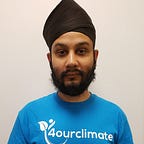Are the 2020 California Wildfires the New Reality?
The 2020 California Wildfires has been one of the most devastating in recent times. Over 8,100 fires have contributed to the burning of nearly 4.5 million acres of land, over 10,000 structures being damaged and 33 fatalities. But the question remains, do we expect to see these devastating wildfires the new norm in California and much of the Western United States? To answer this, we must take a look at some key indicators.
The changing climate
Much of the Western United States including California gets most of its moisture during the fall and winter months. And during much of the summer, the vegetation slowly dries out due to a lack of rainfall and warmer temperatures. Just the ideal scenario you need for fires to spark and ignite.
While California’s climate has always been susceptible to wildfires, the link between climate change and devastating wildfires is quite crystal clear.
In an interview with the New York Times, Park Williams, a bioclimatologist at Columbia’s University’s Lamont-Doherty Earth Observatory said “This climate-change connection is straightforward: warmer temperatures dry out fuels. In areas with abundant and very dry fuels, all you need is a spark.”
The state’s fire records can be traced back to 1932 with the 10 largest wildfires occurring since 2000. This includes the 2018 Mendocino Complex Fire, the largest in California’s history, and the 2020 L.N.U. Lightning Complex.
Fire Suppression
In the past, fire-fighting methods being deployed in the United States have actually made present day wildfires much worst. As counterintuitive as that might sound.
“For the last century we fought fire, and we did pretty well at it across all of the Western United States,” Dr. Williams states. “And every time we fought a fire successfully, that means that a bunch of stuff that would have burned didn’t burn. And so over the last hundred years we’ve had an accumulation of plants in a lot of areas.
“And so in a lot of California now when fires start, those fires are burning through places that have a lot more plants to burn than they would have if we had been allowing fires to burn for the last hundred years.”
As a result, more sound fire-fighting techniques are being implemented presently by the United States Forest Service such as the use of prescribed or “controlled” burns.
The Santa Ana Winds
The Santa Ana winds are strong gusts that bring dry air from the Great Basin area of the West into Southern California each fall.
California has two very distinct wildfire seasons. The first which runs from June through September is the changing climate — a combination of warmer, dryer weather that most of us think of. The wildfires associated with warmer dryer climate tend to be more inland and in-higher elevation forests.
The second wildfire season in California begins in October and runs through April which is driven by the Santa Ana Winds. These fires tend to spread three times faster and they burn closer to urban areas, causing 80 percent of economic losses over the last two decades.
So this begs the question.
Are the 2020 California Wildfires the New Reality?
While drying out vegetation, the Santa Ana Winds also moves embers around causing the spread of wildfires. Bringing the focal point back to climate change.
Linking an individual fire to climate change takes time and analysis from the evolving discipline of attribution science. However, the effects of greenhouse gas we have been producing underlie everything that occurs in our atmosphere. The tendency of climate change to make dry places drier over time is a sheer warning to us all — more so to Californians of a fiery future that lies ahead.
Sources:
https://www.fire.ca.gov/incidents
https://www.nytimes.com/article/why-does-california-have-wildfires.html
